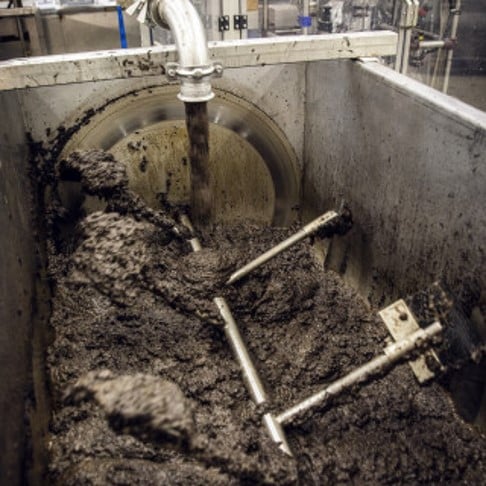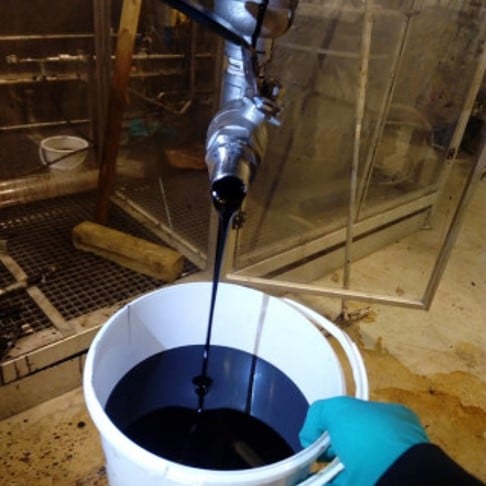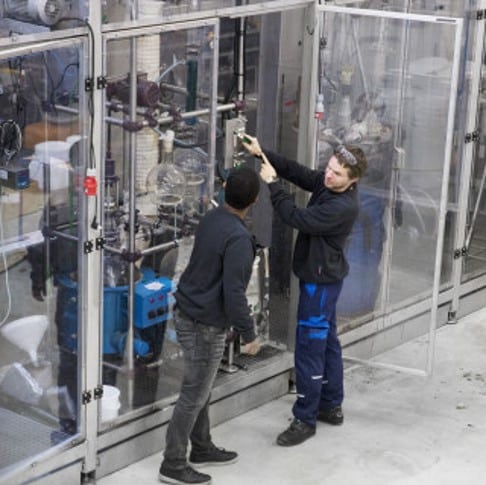Hydrothermal Liquefaction:
The CIRCULAIR process can convert almost any organic feedstock into liquid fuels. In the hydrothermal liquefaction step, aqueous feed slurries are processed at temperatures around 300-350 °C and pressures around 160-220 bar.
The resulting biocrude, a viscous black oil phase, can be further upgraded to liquid hydrocarbon fuels. The hydrothermal processing of feed slurries with dry matter content of around 15-20% avoids the need of prior energy-intensive drying.
Thus, HTL is in particular attractive for cost-effective conversion of wet feedstock like sewage sludge or manure.

Feed slurry preparation for HTL (© Aarhus University)

HTL biocrude from the pilot plant (© Aarhus University)

HTL pilot plant at Aarhus University (© Aarhus University)
HTL Water Valorisation: CIRCULAIR’s Innovation:
A direct consequence of hydrothermal processing is the co-production of process water that contains substantial quantities of organic compounds. The organic content of the HTL process water needs to be significantly reduced before disposal. Furthermore, achieving high-energy efficiency and high biomass resource utilisation requires suitable valorisation schemes for the HTL process water.
CIRCULAIR develops viable solutions for HTL process water valorisation. The process water is treated by wet oxidation, an exothermic conversion of organic compounds at hydrothermal conditions. The thermal energy that is released during wet oxidation is utilized as process heat for HTL conversion. Furthermore, CO2 released during wet oxidation is recovered and serves as a feedstock for methanol synthesis.
In addition, CIRCULAIR investigates synergy effects in the co-liquefaction of manure and straw.